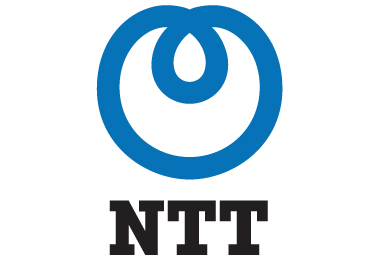Feb 26, 2024 - NTT Data and Schneider Electric today unveiled a product offering that integrates edge, private 5G, IoT and modular data centers to enable edge connectivity “anywhere.” It’s a “first-of-its-kind co-innovation that empowers enterprises to harness the power of edge computing,” the companies said in a press release.
The joint offering is expected to enable companies to maximize energy efficiency and meet the demands of compute-intensive data center tasks such as generative AI (Gen AI), machine vision, predictive maintenance, and other AI inferencing applications at the edge.
The announcement comes as the artificial intelligence landscape continues to expand rapidly with companies like OpenAI, Anthropic, Google, IBM, and others driving cutting-edge innovations with numerous enterprise use cases. At the center of these innovations, especially in the large-scale AI model domain, is an incredibly high demand for compute power. For context, large scale AI models — which are what enable the possibilities we’re seeing with Gen AI today — use “about 100 times more compute power than contemporaneous AI models,” according to the AI Now Institute.
Handling large volumes of datasets is incredibly complex, requiring heavy memory loads, huge storage capacities, specialized infrastructure tools, and more. These challenges were what originally led to edge computing, which brings computation closer to the edge or data source, reducing the time it takes for data to travel back and forth between devices and centralized servers. This reduced latency is crucial for generative AI applications, where real-time responsiveness is paramount.
At the moment, only one in three organizations have reported a majority of their data volume (over 50%) on the edge, according to research by IDG/Foundry, but that number is expected to grow.
A ‘Holistic’ Solution to Meet the Industry’s Evolving Needs
Shahid Ahmed, EVP of New Ventures and Innovation at NTT Ltd., highlights the significance of this collaboration by noting that “the future of digital transformation hinges upon processing vast amounts of data generated by edge devices.” He adds that this solution puts both companies in a position to lead the way towards a more connected and efficient digital world.
At the heart of this announcement is the coming together of Schneider’s Electric’s EcoStruxure, a modular data center, and NTT DATA’s Edge-as-a-Service, which “delivers end-to-end cloud and fully managed private 5G (P5G), IoT and edge computing to transform operations securely.” Both companies say this combination “seamlessly integrates edge, P5G, IoT, and modular data centers, offering a holistic solution to meet the evolving needs of enterprises.”
Rob McKernan, president of the Cloud & Service Provider Segment at Schneider Electric, says this partnership aims “to assist global clients in adopting connected devices, specialized industrial solutions, and the right edge computing infrastructure to gain valuable data insights – particularly in the context of IoT and emerging AI requirements.”
In an era dominated by Industry 4.0, enterprises are facing unprecedented challenges. The collaboration between NTT DATA and Schneider Electric seeks to address these challenges head-on, ensuring seamless connectivity, high bandwidth, and secure low-latency connections through edge data centers.
A recent study by NTT, Omdia and Intel found that 88% of respondents cited 5G as an important enabler of their strategic initiatives, with those combining private 5G and edge reporting the highest benefits. Furthermore, an overwhelming 93% consider edge a competitive advantage. But while more than 80% of technology decision-makers say their edge investment expectations have been met or exceeded, many fear that the rapid pace of technology evolution could cost them in the long term.
Four years ago, Camille Mendler, chief analyst Enterprise Services at Omdia, underscored the importance of investing in digital resources at the edge, saying that “If you need to have autonomous capabilities, if you want to have resilience, all of that happens on the edge and a lot of the times, those decisions need to be made in those five milliseconds, so make the decision now.” This collaboration between NTT Data and Schneider Electric is in agreement with Mendler’s assertion.
What Are the Implications?
Avi Baum, chief technology officer at Tel Aviv-based AI chipmaking company Hailo, tells Data Center Knowledge that bringing AI innovation to the edge has both near-term and long-term positive implications. Baum notes that already we’re seeing innovations like ChatGPT in the consumer domain allow people to interact with machines in many different ways. Players in the B2B world, he adds, are also deploying AI-savvy products and services like optical inspection in production lines and robotics.
What this collaboration between NTT and Schneider Electric means for the industrialized world, according to Baum, is that it will translate into machine uptime and the ability to do better manufacturing, as well as increased accuracy with things like predictive maintenance.
“This type of partnership is great for creating open ecosystems that harness the power of many innovators that are building towards the future,” he adds.
Marienpark, a large-scale historic industrial complex in Berlin, Germany, is already leveraging this co-innovation by NTT DATA and Schneider Electric to deliver enhanced connectivity and compute experiences for users across the campus in what is the first customer deployment of the edge data center solution to go live. This announcement comes on the heels of a $500 million investment pipeline over the next few years and some momentum NTT DATA is seeing in the P5G domain, with some of the world’s most notable brands.
Fueling an ecosystem of innovation with other global leaders like Schneider Electric, Celona, Cisco, Microsoft, VMware, Qualcomm, and SES, NTT says it’s “delivering connectivity for global customers even in very complex and remote areas.”





